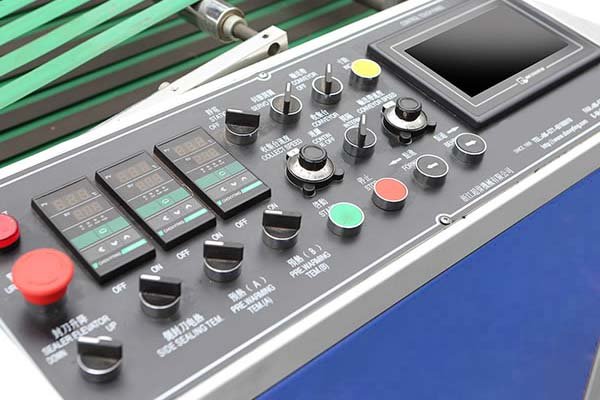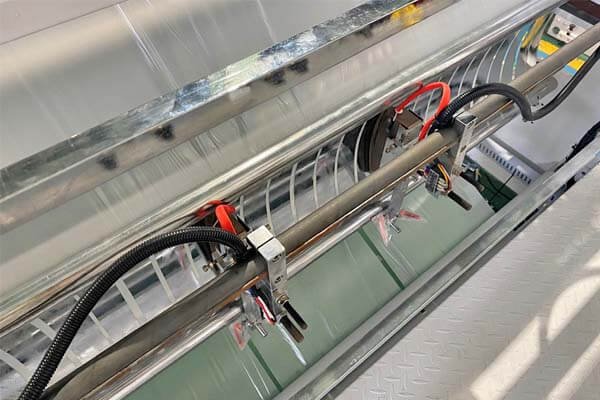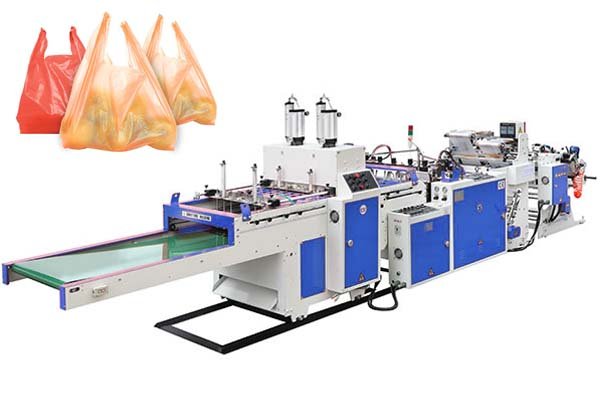
Importing machinery that fails local voltage or safety inspections can lead to serious setbacks—regulatory issues, costly delays, or even unusable equipment. Meeting export standards requires a systematic approach.
To ensure a plastic bag making machine complies with destination standards, manufacturers should first verify the country's voltage and safety requirements. The machine's electrical system must then be customized accordingly. Finally, it must undergo rigorous testing to meet certifications like CE for Europe.
This process should begin at the design stage. Manufacturers need to identify region-specific requirements early—voltage, frequency (Hz), and plug types—so they can integrate certified components into the build. That avoids last-minute changes or shipment issues and ensures the machine functions properly upon arrival. Experienced engineers trained in global compliance standards are essential for getting these details right.
For example, Germany uses a 230V/50Hz grid, which demands different components than the 120V/60Hz supply in the U.S. Machines must be built with appropriate wiring, breakers, and motor configurations. A robust pre-shipment test—simulating the target country's power grid—verifies that everything works before dispatch.
What Are the Key Electrical Standards to Know Before Importing a Machine?
Understanding the core voltage and safety standards by region is crucial before importing any equipment.
The most important benchmarks are the CE mark in Europe, and UL or ETL certification in the U.S. and Canada. It's also critical to confirm your region’s voltage (e.g., 230V, 480V) and frequency (50Hz, 60Hz) for full compatibility.
These are legal standards, not optional features. They ensure machines are safe for both operators and the facilities where they are used.
Key Safety Certifications
Each region enforces different safety validation systems. Manufacturers must adapt designs accordingly:
- CE Marking (Europe): Mandatory for products sold in the European Economic Area. It confirms compliance with EU directives such as the Machinery Directive and Low Voltage Directive.
- UL / ETL (North America): These indicate a product has been tested by recognized third parties (like UL or Intertek) for safety standards in the U.S. and Canada.
- ISO 9001 (Global): While not specific to electrical safety, ISO 9001 indicates that a company maintains a consistent and reliable quality management system across all manufacturing processes.
Regional Electrical Standards at a Glance
| Region | Common Standard | Key Focus | Manufacturer Compliance Practice |
|---|---|---|---|
| Europe (EEA) | CE Marking | Health, Safety, Environmental | CE-compliant design, certified parts, Declaration of Conformity |
| North America | UL / ETL / CSA | Fire, Electrical, Product Safety | Use of UL-listed parts, optional NRTL certification |
| Australia/NZ | RCM | Electrical Safety, EMC | Compliance checks for all power-related components |
| Global | ISO 9001 | Quality Management System | Certified QMS for consistent, high-standard manufacturing |
Why Voltage and Frequency Must Match Local Standards
Electrical mismatches can result in machine failure or safety risks.
- Voltage: A 230V machine designed for Europe can’t run directly on a U.S. 120V outlet. Even with a transformer, incompatible parts can fail.
- Frequency (Hz): Running a 50Hz motor on a 60Hz supply can cause the motor to overheat and wear out prematurely. Frequency-specific components like servo motors and VFDs must be adjusted for each destination.
BagMec®’s 5-Stage QC Process for Safety and Reliability
Certifications are important, but real safety comes from hands-on inspection and testing.
BagMec® uses a five-stage quality control process: material testing, laser alignment, a 72-hour stress test, dedicated safety checks, and a pre-shipment reassembly validation.

This multi-step approach helps ensure that all machines are safe, compliant, and ready to perform as intended.
Inside the 5-Stage QC System
1. Material Testing
Test the hardness and purity of key materials to ensure structural integrity under high-speed operation.
2. Laser Alignment
Calibrate all mechanical parts to tight tolerances (±2%) using laser tools to reduce vibration, wear, and mechanical risks.
3. 72-Hour Stress Test
Run the machine continuously at full speed using the target region’s voltage and frequency to simulate real-world conditions.
Checks include:
- Motor and Cabinet Temperature
- Operational Stability
- Bag Quality Consistency
4. Safety Compliance Check
| Safety Feature | Check Performed | Purpose |
|---|---|---|
| Emergency Stops | Press each E-stop to ensure immediate machine halt | Verifies emergency shutdown capability |
| Safety Guards | Confirm all guards and interlocks function properly | Prevents access to moving parts |
| Electrical Cabinet | Inspect wiring, grounding, and labeling | Reduces fire, short circuit, and shock risks |
| Safety Labels | Check for clarity, correct language, and placement | Ensures operator awareness of hazards |
5. Pre-Shipment Validation
Partially disassemble and reassemble modules to confirm easy and accurate reassembly at the customer’s facility.
Regional Safety Customizations Offered
Different industries and locations call for different safety configurations.
BagMec® tailors machines using region-specific components, multi-language interfaces, modified guards, and environmental adaptations like corrosion resistance.

Common Customizations
Component Sourcing by Region
- EU Markets: Siemens or Schneider electrical components.
- North America: Allen-Bradley components for easier servicing and compatibility.
Interface and Label Translations
- Multi-language HMI, manuals, and safety labels are provided to ensure operator clarity and reduce the risk of error.
Environmental Adaptations
- Corrosion Resistance: For tropical or coastal regions.
- Dust Protection: Dust-proof cabinets and air filters for dry, particulate-heavy environments.
Customizations by Region
| Custom Feature | Target Market | Benefit | Example Use |
|---|---|---|---|
| CE Electrical Compliance | Europe | Legal access to EU markets | FFS bag maker in Germany |
| Multi-language HMI | Latin America | Easier training, fewer operator mistakes | Diaper bag machine in Mexico |
| Dust-Proof Cabinets | India, Middle East | Prevents overheating, protects electronics | Courier bag production in India |
| Corrosion Protection | Southeast Asia | Extends lifespan, protects wiring/electronics | Food packager in coastal area |
What If a Machine Fails Inspection Upon Arrival?
Even with precautions, buyers may worry about compliance issues. A responsive support system is essential.
If any machine fails to meet standards after delivery, BagMec® offers remote diagnostics, on-site support, and express part replacement at no extra cost.
3-Step Global Support Plan
1. Remote Diagnosis
- IoT Access: Engineers connect remotely to the control system to identify and resolve problems fast.
- Software Fixes: Many issues are solved with remote adjustments or guided fixes via video call.
2. On-Site Support
- Local Technicians: BagMec® partners in over 20 countries.
- Direct Engineer Dispatch: For major issues, engineers travel to your facility for repairs or adjustments.
3. Fast Replacement Parts
- Stock Readiness: Common electrical and mechanical parts are kept in inventory.
- Express Shipping: Critical parts are shipped via DHL/FedEx at no cost, minimizing production downtime.
Conclusion
Ensuring a plastic bag making machine meets voltage and safety standards isn’t a last-minute step—it’s built into the entire manufacturing process. From regional customization to multi-layer quality control and post-sale support, machines should arrive fully compliant and production-ready.






